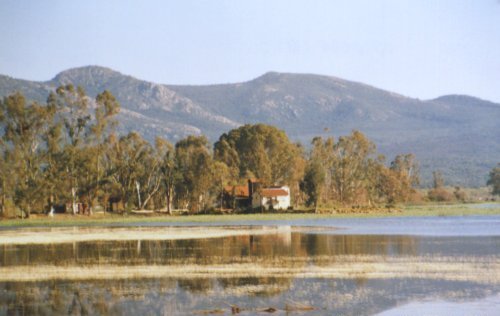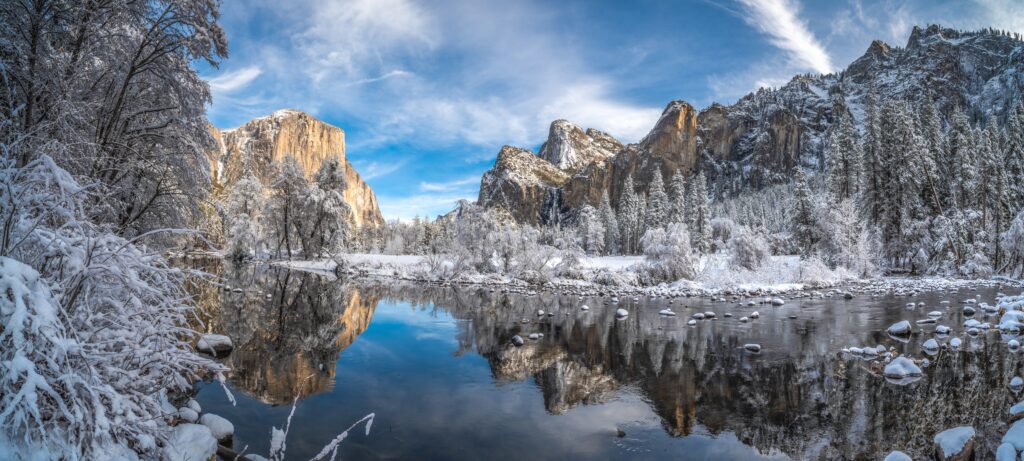
Nestled in the northeastern region of Algeria, El Kala National Park stands as a testament to the country’s rich biodiversity and stunning natural landscapes. Spanning over 76,000 hectares, this park is a sanctuary for numerous plant and animal species, making it a crucial area for conservation efforts. With its breathtaking scenery, diverse ecosystems, and cultural significance, El Kala National Park is not just a destination for nature lovers; it is an experience waiting to be explored.
History and Establishment of El Kala National Park
El Kala National Park was established in 1983 to protect the unique ecosystems found in the region. The area has a long history of human habitation, with traces of ancient civilizations found in the nearby hills. The park is located near the coastal town of El Kala, which has been an important settlement for centuries. The region’s rich history and cultural heritage are woven into the fabric of the park, providing visitors with a glimpse into the past.
The establishment of the park was driven by the need to conserve its unique habitats, including wetlands, forests, and coastal ecosystems. These environments are home to a variety of flora and fauna, some of which are endemic to the region. The park’s designation as a national park has helped to raise awareness about the importance of conservation and sustainable tourism in Algeria.
Geographic Features
El Kala National Park is situated at the intersection of the Tell Atlas mountain range and the Mediterranean coast. This unique geographical positioning creates a diverse range of habitats, from lush forests and rolling hills to wetlands and sandy beaches. The park’s elevation varies significantly, contributing to its rich biodiversity.
Forests and Woodlands
The park’s forests are primarily composed of cork oaks, pines, and various Mediterranean shrubs. These woodlands provide critical habitats for many species, including the endangered Barbary macaque. The forested areas are not only vital for wildlife but also serve as a natural barrier against soil erosion, protecting the landscape from degradation.
Wetlands and Lakes
One of the park’s most striking features is its wetlands, which include the impressive Lake Oubeira. This lake is a crucial stopover point for migratory birds and supports a rich diversity of aquatic life. The wetlands play a vital role in maintaining the ecological balance of the region, acting as natural filters and flood control systems.
Coastal Ecosystems
The park’s coastline is characterized by sandy beaches, rocky cliffs, and clear waters. These coastal areas are home to numerous marine species and are essential for the local fishing community. The combination of marine and terrestrial ecosystems creates a rich environment for both wildlife and human activities.
Biodiversity
El Kala National Park is a biodiversity hotspot, hosting over 1,000 species of plants and animals. The park’s varied ecosystems provide habitats for a wide range of species, making it an important area for conservation efforts.
Flora
The park’s flora is diverse, with many species adapted to the Mediterranean climate. Endemic plants, such as the Algerian lavender and various orchids, thrive in the park’s varied habitats. The rich plant life supports a variety of wildlife and contributes to the park’s overall ecological health.
Fauna
The animal life in El Kala National Park is equally impressive. Key species include:
Barbary Macaque: This endangered primate is one of the park’s most iconic residents. The Barbary macaque is known for its social behavior and adaptability, making it a fascinating subject for wildlife enthusiasts.
Birds: The park is a haven for birdwatchers, with over 200 species recorded. Notable species include the flamingo, herons, and various raptors. The wetlands and lakes provide ideal nesting grounds and feeding areas for migratory birds.
Mammals: Besides the Barbary macaque, the park is home to several other mammals, including wild boar, foxes, and various species of deer. The presence of these animals reflects the health of the park’s ecosystems.
Cultural Significance
El Kala National Park is not just a natural wonder; it is also rich in cultural heritage. The region has been inhabited for thousands of years, and various archaeological sites dot the landscape. Ancient ruins, traditional Berber villages, and remnants of Roman settlements add layers of historical significance to the park.
Berber Heritage
The Berber people have lived in the region for centuries, and their culture is deeply intertwined with the landscape. Traditional practices, crafts, and agricultural techniques have been passed down through generations. Visitors to the park can experience Berber hospitality through local tours, food, and crafts.
Archaeological Sites
El Kala is close to several archaeological sites, including Roman ruins that highlight the area’s historical importance. Exploring these sites offers a glimpse into the past, allowing visitors to appreciate the long-standing relationship between humans and nature.
Activities and Attractions
El Kala National Park offers a range of activities for nature lovers, adventure seekers, and cultural enthusiasts. Whether you’re hiking through the forests, birdwatching by the lakes, or exploring local villages, there’s something for everyone.
Hiking and Nature Walks
The park features numerous trails that cater to different skill levels. Hiking through the lush forests offers a chance to spot wildlife and enjoy stunning views. For those looking for a more leisurely experience, nature walks along the wetlands provide opportunities to observe birds and other wildlife up close.
Birdwatching
With over 200 bird species, El Kala is a paradise for birdwatchers. The wetlands and lakes are particularly good spots for observing migratory birds. The best time for birdwatching is during the spring and autumn migrations when the park is teeming with avian life.
Photography
The park’s diverse landscapes and rich biodiversity make it a photographer’s dream. Whether capturing the stunning sunsets over the lakes, the vibrant colors of wildflowers, or the playful Barbary macaques, there are endless opportunities for stunning photography.
Cultural Tours
Visitors can engage in cultural tours that showcase the heritage of the Berber people. These tours often include visits to traditional villages, craft workshops, and local markets. Participating in local customs and traditions provides a deeper understanding of the region’s cultural significance.
Conservation Efforts
The importance of El Kala National Park extends beyond its beauty; it plays a crucial role in conservation. Efforts to protect its unique ecosystems and wildlife are ongoing, with a focus on sustainable tourism practices.
Challenges
Despite its protected status, the park faces several challenges. Habitat loss due to urbanization, climate change, and illegal hunting poses significant threats to its biodiversity. Conservationists are working tirelessly to address these issues, but public awareness and community involvement are vital for success.
Sustainable Tourism
Promoting sustainable tourism practices is essential for the long-term health of the park. Initiatives that encourage eco-friendly travel, such as guided tours that prioritize conservation and local culture, are gaining traction. By fostering a sense of stewardship among visitors, El Kala can be preserved for future generations.
Visiting El Kala National Park
Getting There
El Kala National Park is easily accessible from the coastal town of El Kala, which is well-connected by road. The nearest major city is Annaba, approximately 60 kilometers away. Visitors can rent a car or take public transportation to reach the park.
Best Time to Visit
The best time to visit El Kala is during the spring (March to May) and autumn (September to November) when the weather is mild, and wildlife is more active. Summers can be quite hot, while winters may bring rainfall, affecting accessibility in some areas.
Accommodation
Accommodation options range from local guesthouses and hotels in El Kala to campsites within the park. Staying in a local guesthouse allows visitors to experience the culture and hospitality of the region.
Park Regulations
Visitors are encouraged to respect the park’s rules and regulations to protect its delicate ecosystems. This includes staying on designated trails, not disturbing wildlife, and following guidelines for waste disposal.
Conclusion
El Kala National Park is a hidden gem in Algeria, offering a unique blend of stunning natural beauty, rich biodiversity, and cultural heritage. Whether you’re an adventurer seeking outdoor activities, a birdwatcher hoping to spot rare species, or a culture enthusiast wanting to learn about the Berber way of life, El Kala has something for everyone.
As awareness of the park’s significance grows, so does the need for sustainable practices that ensure its preservation. By visiting El Kala National Park, travelers can enjoy its beauty while contributing to the ongoing conservation efforts that protect this remarkable landscape for generations to come.
In an age where many natural wonders face threats from climate change and human activity, El Kala National Park stands out as a symbol of hope and resilience. By exploring its wonders, visitors can become part of the story, helping to safeguard this precious piece of Algeria’s natural heritage.
